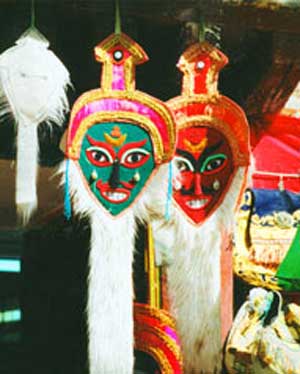| Legole.Com Discover china. Explore the beauty and wonder of the land, people, and culture of China. |
 |
|
|
 |
 Barkhor, a circular street at the center of Old Lhasa, is the oldest street in a very traditional city in Tibet. It is a place where Tibetan culture, economy, religion and arts assemble and a place to which a visit must be paid. Barkhor, a circular street at the center of Old Lhasa, is the oldest street in a very traditional city in Tibet. It is a place where Tibetan culture, economy, religion and arts assemble and a place to which a visit must be paid.
It has been said that in the seventh century Songtsen Gampo, the first Tibetan King (617 or ?-650) who unified Tibet, married Chinese Princess Wencheng and Nepal princess Tritsun. Later Princess Tritsun built Jokhang Temple to accommodate the twelve-year-old Jowo Sakyamuni, brought to Tibet by Princess Wencheng.
Barkhor is the road which pilgrims tramped out around Jokhang Temple through centuries. Buddhist pilgrims walk or progress by body-lengths along the street clockwise every day into deep night. Most of Lhasa's floating population is comprised of these pilgrims. The pilgrims walk outside four columns on which colorful scripture streamers are hung, a custom which began in the Tubo period (633-877) as a way to show respect.
To the west of the north street of Barkhor, in front of a juniper hearth, the annual ceremony to hail Maitreya (Buddha of the Future) is held. Tibetans pray before the hearth to expect fortune in the next year. A yamun, which used to be the office of a Lhasa magistrate, squats nearby. A small lane leads northward to a nearby market, the oldest market in Lhasa. The pantheon of the three story temple built during the Tubo period retains its Tubo architecture after many renovatioins. It was said that characters used in Tibetan writing were invented in the temple.
Barkhor, the sacred pilgrim path, is also a marketplace where shaggy nomads, traders, robed monks and chanting pilgrims join together. Clustered shops and stalls sell printed scriptures, cloth prayer flags and other religious vessels, jewelry, Tibetan knives, ancient coins and other Tibetan relics. |
 |
|
|
 |
|
